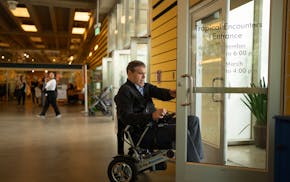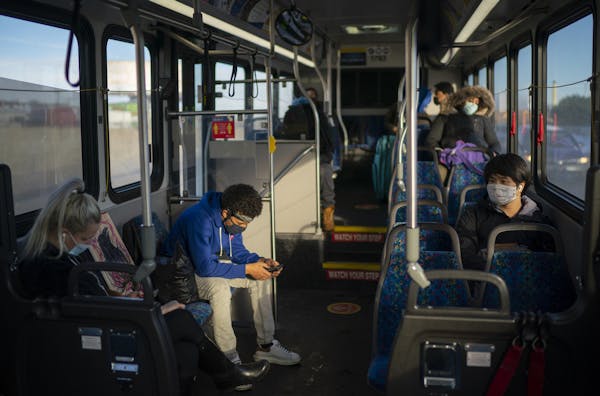All Metro Transit buses and trains will be back to full capacity starting Friday as the agency drops passenger limits instituted at the onset of COVID-19.
Riders will still be required to wear a mask, according to guidelines set forth by the Centers for Disease Control and Prevention (CDC) and a mandate from the federal government that remains in effect until Sept. 13. The change at Metro Transit will come as the state removes limits on outdoor dining and events, outdoor mask use and early closing times for bars, restaurants and other gathering spaces.
"This is an exciting time for us," said Metro Transit general manager Wes Kooistra. "We thank the customers who stayed with us [during the pandemic] and we can start welcoming back customers who left us at our request."
Plymouth Metrolink, Minnesota Valley Transit Authority and Maple Grove Transit will also remove bus capacity limits beginning Friday.
When the pandemic hit full-bore in March 2020, Metro Transit, the metro's largest transit agency, created passenger limits — 10 people at a time on 40-foot buses, 15 people on 60-foot buses and 16 people in light-rail cars — and asked riders to use transit only for essential trips in keeping with public health guidance. In April, the agency increased capacity on trains and buses to 50%.
When transit vehicles reached capacity, riders were asked to wait for the next one. That happened about six to seven times a day, said spokesman Howie Padilla.
With the return to full capacity limits, "riders won't have to worry about that," he said.
With capacity restrictions in place, Metro Transit ridership plummeted. The agency provided 111,000 rides on weekdays in 2020, with local routes seeing the highest usage, Kooistra said. In 2019, Metro Transit provided more than 77.9 million total rides, or about 251,000 rides each weekday.
"We know people rely on transit to get to work and it's important for their daily lives," Kooistra said. "Our intent is to come back stronger and be a better system than before."
Commuter express routes account for about 30% of the agency's ridership. Many of those routes were suspended when COVID-19 hit and companies began allowing remote work. It's not clear when those routes will be reinstated, Kooistra said.
For now, Metro Transit will focus on local routes and moving ahead on projects to provide safe, frequent and all-day service, including the new Orange Line bus rapid line from downtown Minneapolis to Burnsville set to open later this year.
Metro Transit will begin removing signs that direct riders to maintain a 6-foot distance, but those that encourage people to keep a safe distance will remain in buses and trains. Daily sanitation routines will continue, Padilla said.
If demand for express service arises, "we can change services to meet those needs," Kooistra said. "It will be a long haul to returning ridership to where it was before."
But being able to return to normal capacity limits will "be a shot in the arm for the transit agency."
Tim Harlow • 612-673-7768
Anderson: For opener, fishing will be fantastic — and catching will be great

As unsolved Minneapolis homicides stack up, families of victims wait for justice

Minneapolis residential property taxes could rise steeply in 2025

'I'm a living miracle.' Tommies athlete goes from broken bones to broken record

